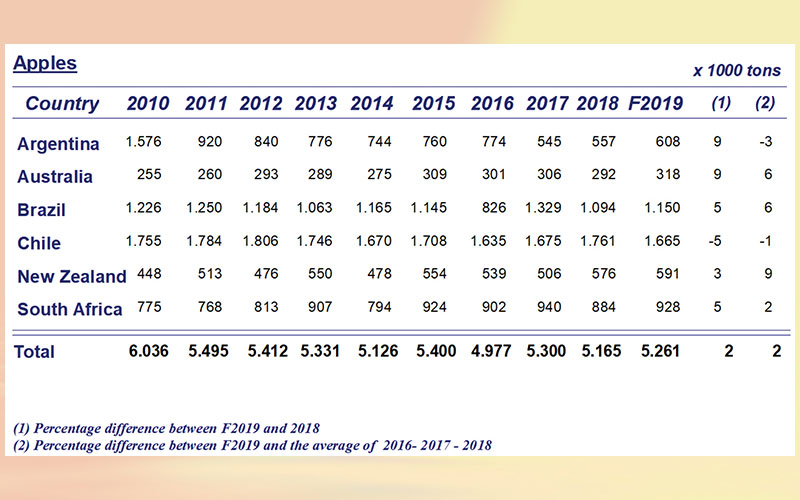World Apple and Pear Association (WAPA) presents annual Southern Hemisphere production forecast
According to tradition, the World Apple and Pear Association (WAPA) held its Annual General Meeting on the last day of the Fruit Logistica fair in Berlin, 8 February 2019.

According to tradition, the World Apple and Pear Association (WAPA) held its Annual General Meeting on the last day of the Fruit Logistica fair in Berlin, 8 February 2019. Representatives of the key global apple and pear producing and exporting countries met to discuss the Southern Hemisphere production forecast, the final update of the Northern Hemisphere production forecast that was released in August 2018, and the season developments.
WAPA discussed and released the consolidated crop forecasts for the forthcoming southern hemisphere apple and pear seasons (see tables in annex). Collected from industry associations in Argentina, Australia, Brazil, Chile, New Zealand and South Africa, the forecast showed that the 2019 apple and pear Southern Hemisphere crops are expected to reach 5.261.000 T and 1.327.000 T, respectively. For apples, this represents an increase of 2 % compared to the 2018 crop. Export is expected to remain stable at 1.738 million T. The pear crop is expected to increase by 2 % compared to 2018. Export is expected to remain stable at 712.154 T.
Other topics on the agenda were marketing, promotion and consumption trends, research and innovation activities among the members, and global initiatives to preserve the biodiversity of the many apple varieties.
Finally, WAPA elected a new president, Nicholas Dicey from HortGro, South Africa, formerly WAPA’s vice-president. As new vice-president, Dominik Wozniak from the Polish Society for Promotion of Dwarf Fruit Orchards was elected. The WAPA secretariat and members are looking forward to continuing the good trends in the coming years with its new presidency and thanked Todd Fryhover from Washington Apple Commission for his time and efforts as WAPA’s vice- president and president over the last four years.









